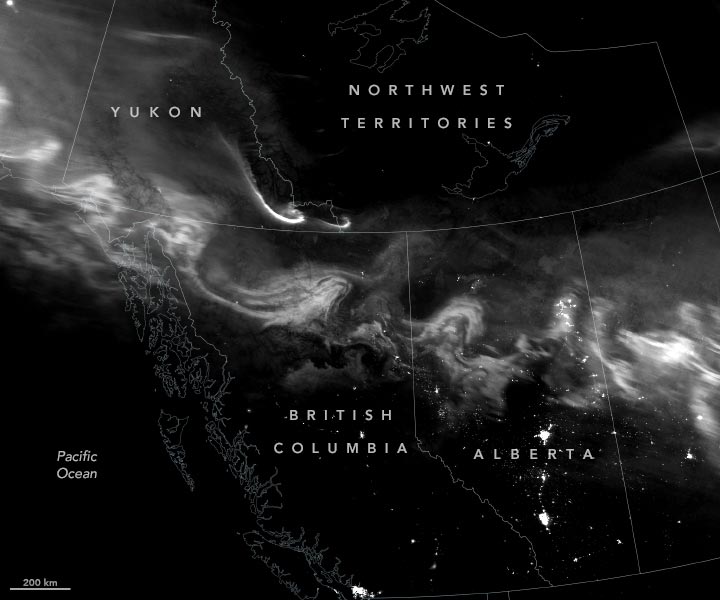A spate of solar activity produced widespread auroras across Canada.
A flurry of solar activity in mid-December 2023 sent energized particles crashing into Earth’s magnetosphere, producing undulating auroras across northern latitudes of our planet. The VIIRS (Visible Infrared Imaging Radiometer Suite) on the NOAA–NASA Suomi NPP satellite captured this image of light from the aurora over western Canada in the early morning of December 17, 2023. The day-night band of VIIRS detects nighttime light in a range of wavelengths from green to near-infrared and uses filtering techniques to observe signals such as city lights, reflected moonlight, and auroras.
Origins of the Auroras
These auroras may have stemmed from several coronal mass ejections that were observed on December 14 and 15. Minor to moderate geomagnetic storm conditions were expected in the following days, according to NOAA’s Space Weather Prediction Center. Coronal mass ejections contain large amounts of plasma from the Sun’s corona and carry with them an embedded magnetic field. Interactions between these expulsions from the Sun and the upper atmosphere of Earth produce light that makes up colorful aurora displays.
The Sun’s Increasing Activity
The Sun’s activity is ramping up as it approaches the peak of solar cycle 25, forecast to occur in or around July 2025. The Sun’s magnetic field flips at the peak of these cycles, each of which lasts approximately 11 years. Scientists track fluctuations in solar activity in part by monitoring the number and location of sunspots—dark blotches on the Sun’s surface that are the main source of solar eruptions.
Aurora and Solar Flare Connection
The aurora seen here occurred several days after the strongest solar flare of this solar cycle so far. Whereas coronal mass ejections may take several days to travel to Earth, solar flares reach the planet in a matter of minutes and interfere with radio communications. Coronal mass ejections often, but not always, occur in tandem with solar flares.
NASA Earth Observatory image by Lauren Dauphin, using VIIRS day-night band data from the Suomi National Polar-orbiting Partnership.

